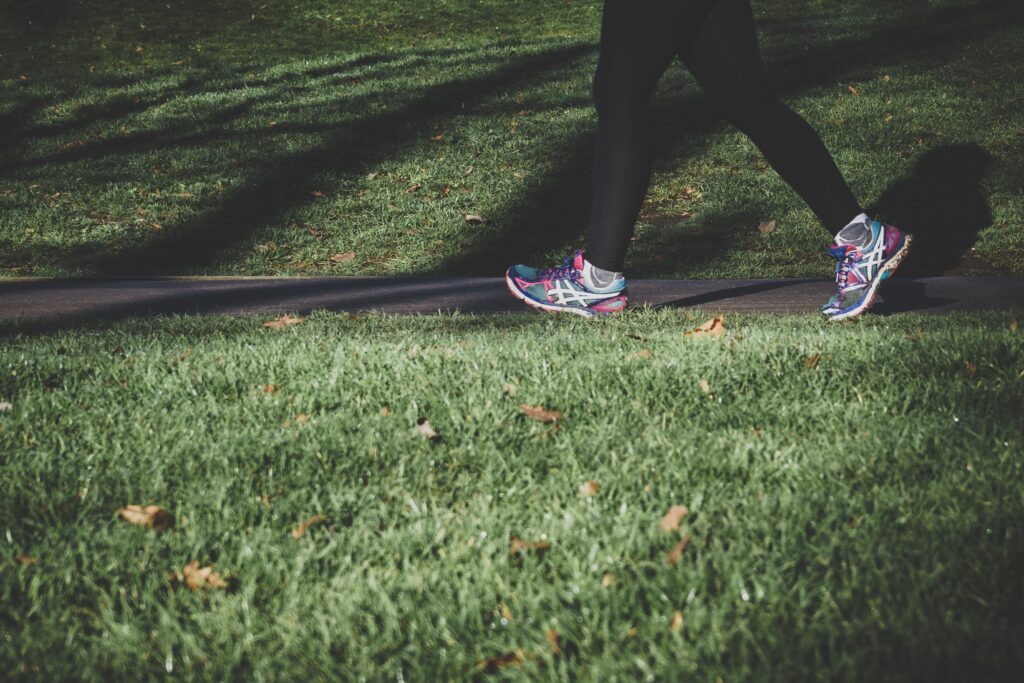[box]
Are you tired of reading hundreds of articles online on correct heel strike running? You might’ve heard lots of runners consider heel striking as a cardinal sin.
While some believe that heel striking generates a substantial braking force that negatively influences the running technique, others consider a complete transition to forefoot or midfoot running.
Let us tell you that the only change you might need is to correct your running strike instead of completely transitioning to a newer one.
Rest assured! Here we’ve explained four approved ways to fix your current heel strike pattern. You’ll also get to know negative hype against heel strike running is true not and whether you’re eligible to change your foot strike. Let’s cut to the chase!

[/box]
Is Heel Striking Bad For Your Running?
[box]
Yes and No! You might’ve seen lots of people being skeptical about heel-strike running. According to several studies in the past, runners with heel-strike running form are more prone to knee and hip journey. But there’s more to dig deeper into!
Well, The reality is that heel-strike running is not the story’s villain. Aggressive heel striking is! Most experts don’t support the belief that heel-striking is a dangerous running style.
If you’re an uninjured runner who completely apprehends safe landing on heels, heel strike running is not bad for you.
Subsequently, you must know that a rear-foot strike increases the chance of overstriding, resulting in higher loading rates when your foot hits the ground. With the constant load on your knee and hips, running will be an uphill struggle.
Whether you forefoot or heel strike, you must know that any aggressive form of foot strike is bad for you and you need to correct it without delay immediately.
[/box]
What Should You Know Before Fixing Your Footstrike?
[box]
Whether you’re an active marathon runner or a long-distance runner, understanding your natural foot strike and fixing it beforehand is crucial for your running economy.
You might ignore a few wake-up calls that are telling you to fix your foot strike instantly. Some of these are:
- Aggressive Heel Striker: If your feet land far in front of your body, you tend to overstride as a heel-striker which generates unbalanced impact forces in your knees and hips. As a result, you have a greater risk of injury at the knee and hip.
- An Injured Runner: If you’ve had a foot, knee, or hip injury recently, your current footstrike needs some adjustment as greater forces can worsen your injury further.
- Aggressive Fore-foot Runner: If you land too high on the balls of your feet, you’re an aggressive fore-foot striker, creating pressure on your Achilles tendons and calf muscles.
James Dunne, a renowned sports rehabilitation therapist, recommends an aggressive heel striker to transition to a lighter glancing heel strike with a slightly increased cadence and proper running form.
Likewise, an aggressive forefoot strike runner should practice soft landing of the foot on the ground.
However, if you wish to transition your footstrike completely, you must consult a sports rehabilitation therapist for further guidance.
[/box]
4 Legit Ways To Correct Heel Strike Running
1. Start By Improving Your Upper Body Posture
[box]
Imagine your back slouched and your hips bent while you heel-strike! The impact forces will collide, fostering greater strain on your muscles.
As an aggressive heel strike runner, there’s already loads of pressure on your knees and spine. Therefore, a correct upper body posture is essential to increase your running economy if you wish to run for longer distances.
Monitor your posture at the start of your running and the end. Practice keeping your back straight and your head leveled up with your shoulders.
As a result of correct upper body posture, your spine nerves bear less pressure and your back muscles feel less tense. Hence, as a heel striker, you can increase your running efficiency and improve your running cadence.
[/box]
2. Perform Running Drills To Improve Your Footstrike
[box]
Whether you’re completely transitioning your footstrike or fixing your existing one, running drills are the best therapy to improve your running form.
Some of the drills that can fix your heel-strike running are:
Carioca
Jump with your right leg over your left leg horizontally by driving up one knee over the other to activate your hips, glutes, and knees. In heel-strike running, greater contact time to the ground decreases the running efficacy.
Carioca will help you improve your stance phase by reducing the contact time with the ground. Therefore, you can improve your running speed and agility.
A-March
Another efficient running drill to improve your footstrike and running form is to practice A and B March before every running session. To practice A March,
- Maintain a tall posture and do not slouch
- Lift your right elbow forward and simultaneously move your left knee upwards.
- Walk forward by altering each side until a set is complete.
This drill will help you become a lighter heel-strike runner by landing your foot underneath your flexing knee. As a result, you can fix your aggressive heel strike easily.
B-March
Once you’ve practiced A-March, it’s time for you to progress to B-march, as it solely focuses on building coordination with your body and footstrike while running. Here’s how you can practice it:
- Drive your foot forward just like you did in A-March but this time with more pressure.
- Repeat the same steps with another foot and keep moving forward.
[/box]
3. Practice Running Cadence During An Easy Run
[box]
Maintaining your cadence (steps/minute) is a go-to solution if you’ve been an aggressive heel striker for a long time and wish to fix your landing heel strike.
James Dunne suggests heel-strike runners increase their cadence by focusing on shorter and quicker steps. You can do so by running on treadmills daily for some weeks and then incorporating the same technique when you run outdoors.
However, most running experts recommend keeping your cadence at a minimum of 5-10 % at a time.
There is no ideal cadence rate entitled to all runners. It totally depends on the type of runner you are and your running mechanics.
[/box]
4. Practice Landing Underneath your Body
[box]
You might have come across runners who land far out from their bodies. Perhaps, you might be one of them!
Let us tell you that striking your foot far away from your body causes an aggressive heel strike and you must avoid such heel striking because it can negatively impact your running efficacy.
However, landing on the ground with a gentle heel strike underneath your body will improve your running economy and your foot strike.
[/box]
FAQ’s
Q.1 What causes heel strikes when running?
[box]
There are a number of things that can cause heel strikes when running, but the most common cause is simply landing on the heel of the foot too hard. This can happen if you are running too fast, or if you are not using the proper form. Heel strike can also be caused by wearing shoes that do not provide adequate support, or by running on a surface that is too hard.
See the best running shoes for heel strikers
If you find that you are heel-striking when you run, there are a few things that you can do to correct the problem. First, make sure that you are using the proper form. Landing on your midfoot or forefoot is much better for your body than landing on your heel. Second, make sure that you are wearing shoes that provide adequate support. Finally, try running on a softer surface, such as a trail or grass.
If you’ve tried the method, try
- running with a metronome or other type of music to help you keep a consistent pace. (music is haram in Islam)
- Try running barefoot or with minimalist shoes. This will help you to land more on your midfoot or forefoot, which will
- Try increasing your cadence, or the number of steps that you take per minute. This will help you to run faster without increasing the impact on your heels.
[/box]
Q.1 Are low-drop running shoes good for midfoot strikers?
[box]
There is a lot of debate on whether or not low-drop running shoes are good for midfoot strikers. Some say that the shoes can help improve your running form and prevent injuries, while others claim that they can actually cause problems and lead to injuries.
See what is heel-to-toe drop in running shoes.
Personally, I believe that low-drop running shoes can be beneficial for midfoot strikers if they are used correctly. I think that the main reason why some people claim that low-drop shoes are bad for midfoot strikers is that they are not used to running in them. It takes time to adjust to running in low-drop shoes, and if you don’t do it correctly, you can definitely hurt yourself.
If you are a midfoot striker and you are thinking about trying low-drop shoes, I would recommend doing your research and talking to a professional before making the switch. Once you have made the switch, take your time to adjust to the new shoes and make sure that you are running correctly in them. I believe that if you do this, you will be able to reap the benefits of low-drop shoes and avoid any injuries.
[/box]
Conclusion
[box]
Above all, instead of transitioning from heel strike running form to a completely new one, you can first try to fix your current foot strike pattern.
With correct body posture and optimized heel-strike running, you can run faster, increase your running economy and enjoy your running stride.
[/box]
